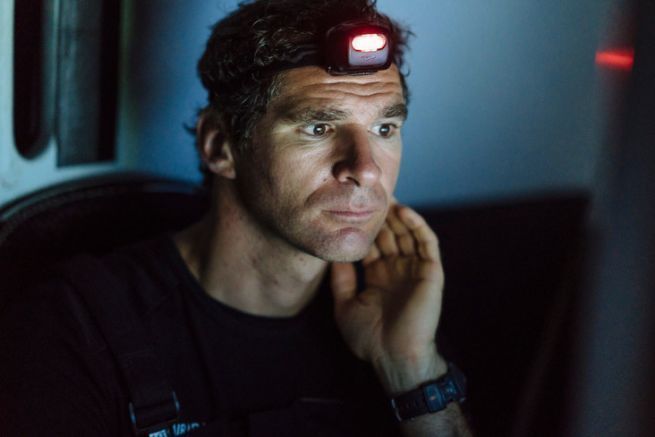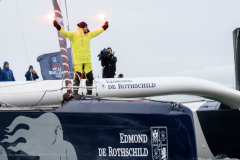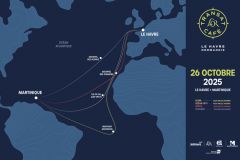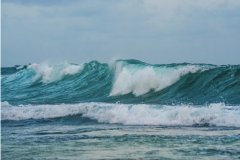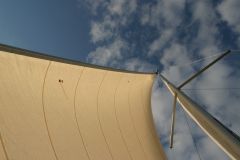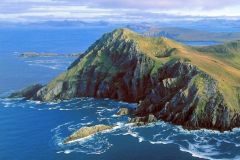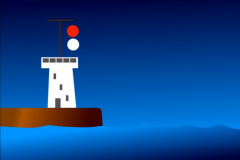A start to ensure the show
On Sunday, November 7, 2021, the 79 competitors in the Transat Jacques Vabre will set off from Le Havre towards Étretat for the great pleasure of the spectators. And the show should be assured since the wind should be sufficient for the boats to go fast, as Erwan Israël, router for the Maxi Edmond de Rotschild, explains.
"The start on Sunday is pretty nice so far. There will be 15/20 knots of wind. It's pleasant for flying boats, even if they'll be sailing upwind. The boats will be at fairly fast speeds, which is not bad for the show. In terms of maneuvering, it also makes things easier with a west-northwest wind on port tack. They won't have to do too much, which is better with two boats. After the last mark of the coastal course, they will sail on an upwind leg to dismanage on starboard tack, with a small north-westerly front behind. So they will have to dismast as quickly as possible with wind between 15 and 25 knots at the beginning. It will be a race of speed."
A complication to manage from the first night
If the beginning of the journey looks quite easy, a first complication will arrive from the first night.
"We're going to have to battle with the light air along the Breton coast. We risk flirting with light airs and getting stuck between the low and the coast. Will the boats manage to slip through and get some downwind sailing at Cape Finisterre or will the low pass and they will be stuck northwest of the ridge of high pressure? The Ultims still have the possibility of catching the downwinds along Portugal very early, but for the slower boats, it will be closed. So the question is whether to make a big turn to the west because the door is closed or the opposite, with downwind conditions that will allow them to get away and widen the gap. The position of this ridge of high pressure will be the key to choosing the position of the boats. From the first night, it will be a strategic key to the race. If some of the boats manage to sail downwind to the south of the ridge of high pressure, it could create big gaps.
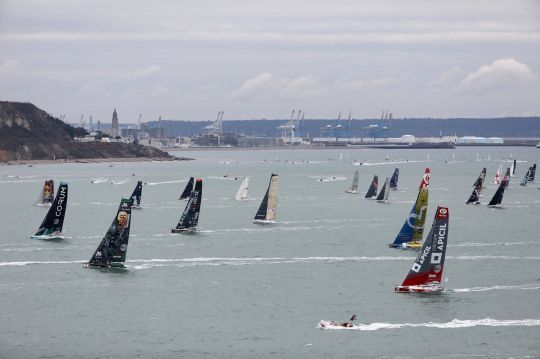
A rather slow race
For the moment, it is still too early to make choices, the router explains. The files are changing rapidly and nothing is set in stone yet. The rest of the race should be rather slow, because of the weak trade winds. While in a favourable situation, the fastest boats could have had a race time of 12 to 14 days, today, the forecasts are more in the range of 14/16 days or 16/18 days. Everything will depend on the chosen course.
"On the trade winds part, they are very weak. There are quite a few lows circulating in the middle of the Atlantic. There will probably be some options to take, some trajectories to refine later on. In any case the descent towards the Equator will not be very fast."
Indeed, the routings announce for the moment a passage from the Equator between 7 and 8 days
Two passages of doldrums
After that, they will have to negotiate with the Doldrums, which everyone will pass through twice (except for the Class40s). And as everyone knows, this one can be a trap
"The special thing about this new course is a double doldrums passage. It is doubly trapping. When you pass it, it's a release. You can lose 200 miles. For the moment it's not very active, but it's still a long way off.
What is a little different with the Trinidade waypoint for the Ultims is that on a Jules Verne, when you pass the doldrums, you accelerate off the coast of Brazil. This time, it's going to be a close-hauled affair. We're going to have to keep our course easy, depending on the direction of the southern trade winds, it won't be easy to pass through the doldrums as far east as possible. There is no certainty that there will be trade winds. But if it is the case, the first one to take the wind after the doldrums will widen the gap. In any case, the organization leaves itself the possibility of modifying the course, so we don't know where we will go if the waypoint moves."
